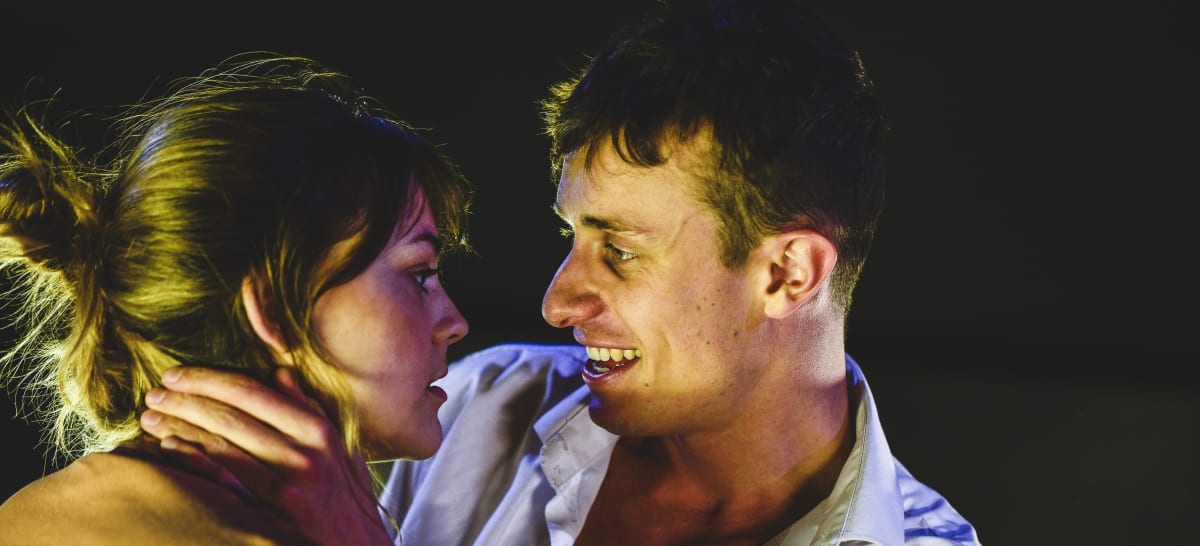In Crave, four unnamed voices (C, M, B, and A) echo without ever quite responding to each other. Occasionally lines latch onto each other, word patterns form and coalesce into the semblance of a scene, but the protagonists exist apart from each other, barred from intimacy and understanding by relentless suffering, even when their utterances seem to follow a trail of thought started by another. Rape, paedophilia, and emotional and physical abuse are just some of the traumas that are hinted at but never fully resolved over the course of this short but intense production. Including a cast and technical team of Royal Welsh College of Music & Drama students, Crave is currently presented at The Other Room as part of their creative traineeship programme, with all due content warnings.
The script of the play consists of a bare dialogue with no stage directions: the settings, gender of the characters, and their interactions are left entirely up to the director. In this production, director Samantha Jones has chosen to make the play’s half-formed relationships explicit and to enhance its narrative strands, by coupling and uncoupling the actors at key junctures of the script. The play contains a particularly rending love monologue, entirely delivered by A (Callum Howells) in a way that seems to make it particularly addressed to C (Emily John). Meanwhile, B (Benjamin McCann) and M (Johnna Diaz-Watson) appear to have a more sustained relationship over the course of the show. A’s adoring gaze comes dangerously close to harassment and aggression, while M appears to push B away. A rope passed from one character to another is variously a bondage tie, a lovers’ knot, and a potentially fatal implement, and substitutes emotional attachment with material fetters.
There is a sense that the play could have done as well without quite so many props: the use of chalk, which the characters start spreading on the wall in the shape of a cross, feels a little unnecessary to bring the play’s religious symbolism home. The harsh lights and colours of the production create a mounting sense of claustrophobia that ultimately suits the script’s mood. The result is raw, frenetic, and occasionally overwhelming, particularly given the stage, a slick black floor placed at the same level as the audience. People are seated on both sides of this floor, and I found that myself and my co-spectators were frequently turning our heads right and left like we were watching a particularly animated tennis game into which we were only afforded partial vision. This incessant back and forth makes things more confusing than is perhaps needed to stage the play’s strident portrayal of a mind unable to live with itself. The cast, however, rises to the challenge throughout, and meets the script’s emotional demands head-on with high-intensity performances.
Full of literary allusions –William Shakespeare, T.S Elliott – Sarah Kane’s script is alternatively lyrical and voluntarily grating in a way rarely paralleled, and even less surpassed, in contemporary theatre. Her radical boldness of tone remains as strong and distinguishable now as it must have been for the play’s first staging in 1998. The script simultaneously pushes us out and draws us back in. As M says: ‘if this makes no sense then you understand perfectly’.

